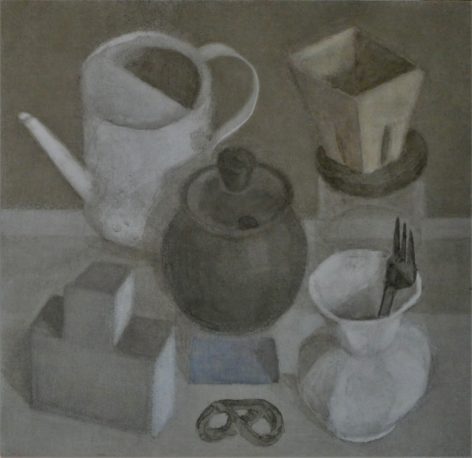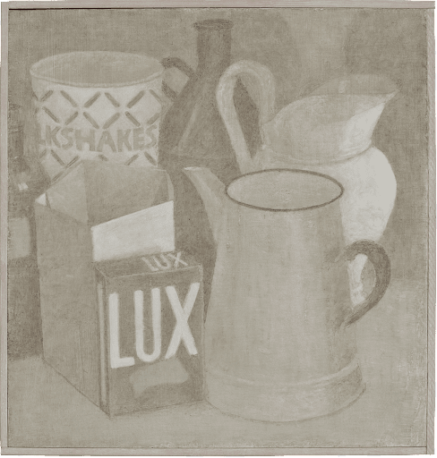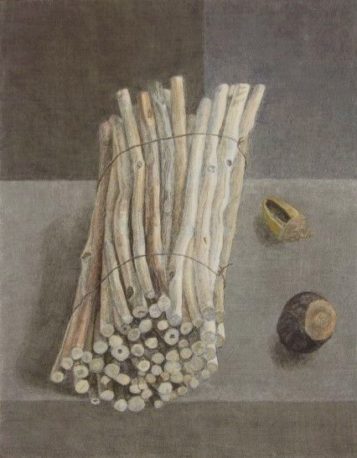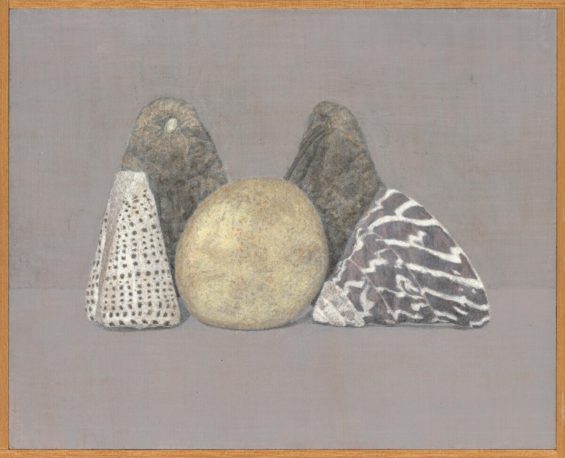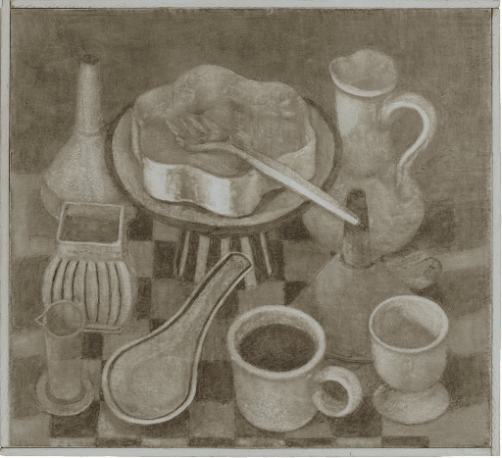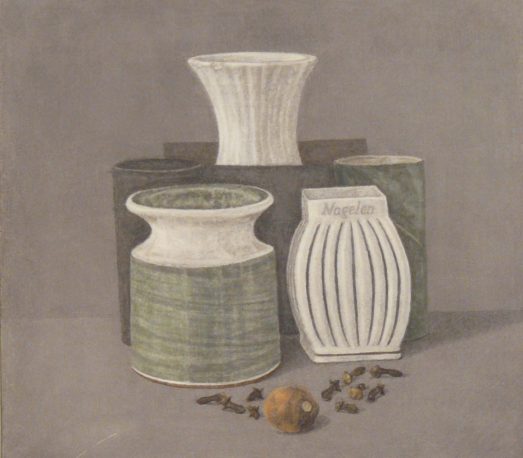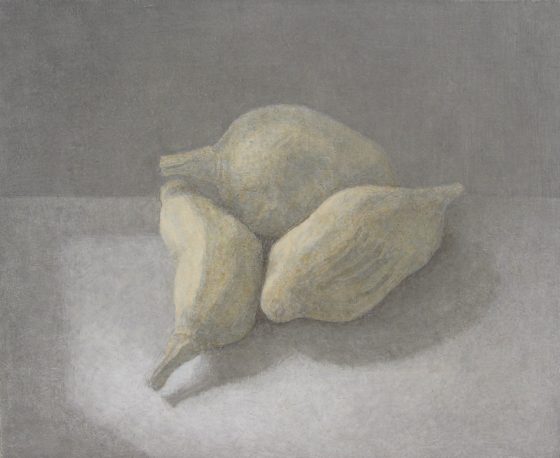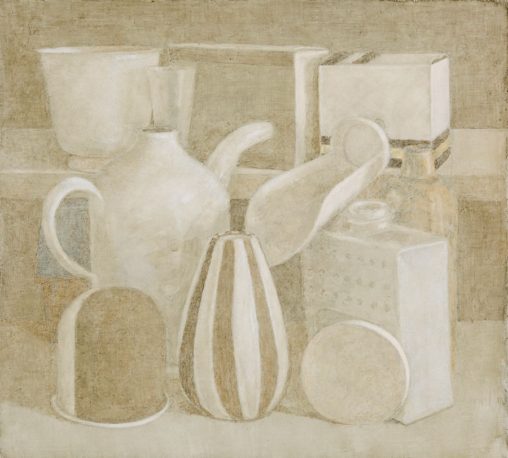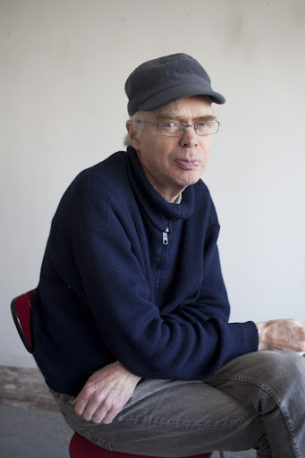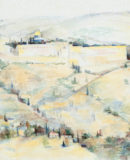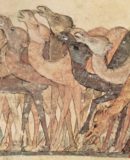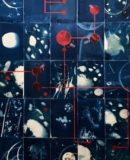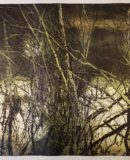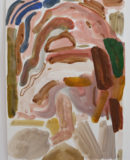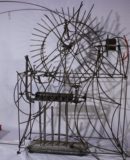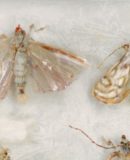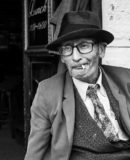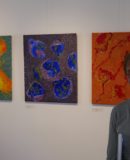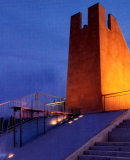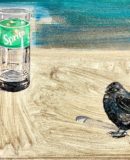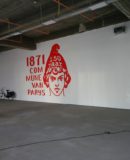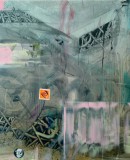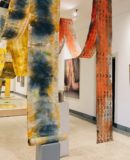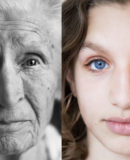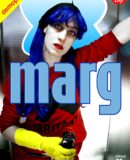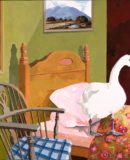World Fine Art Professionals and their Key-Pieces, 349 - Rien Jansen
World Fine Art Professionals and their Key-Pieces, 349 – Rien Jansen
I first saw Rien Jansen’s work at KunstWerkt in Schiedam in the exhibition ‘Solo with guests’ by Inge van Haastert. It immediately reminded me of the still lifes of the famous Italian painter Giorgio Morandi, which I saw in Italy.
Although Rien Jansen was influenced by Morandi, he has his own approach to still life, the painter tells me when I visit him in his studio in Rotterdam. “Adriaen Coorte and Balthasar van der Ast have also influenced me.” They are both painters of the Dutch Golden Age, the 17th century.
In the vault
We are in a small room next to his actual studio. It was once the vault in a former school building, now an artists complex. There are a number of heating pipes in the corner, which makes it pleasant to work here in the winter. There is a small easel on the table and in the cupboard, in addition to tubes of paint, brushes and a magnifying glass, there are various objects that can be seen in his paintings: vases, jugs, a candle holder, etc. When he paints here, Rien Jansen sits with his back against the window to let the light in. Against the wall is a stretcher, where he can rest.
The large studio
We walk back to the large studio. There is a white cupboard, on the floor are series of paintings with the backs out and against the long wall there are boxes. There is one work on the wall: a still life of a watering can and some other objects. Rien Jansen hangs a second still life next to it with a watering can and a bottle. He tells about his working method on the basis of these two works.
Removing paint
He shows a white almost square plate. “A masonite plate, it is refined hardboard. I cover the plate with gesso (a chalk background) so that the masonite no longer shows brown, but turns white. That’s the foundation. Usually I do it seven times, so it’s very white. Then I apply a gray layer, with a roller. Then I draw the performance.”
He shows it by means of an object in the painting in the making: a white pitcher. “I bring it out by removing the gray paint. I do that with a wet brush and a tissue.” He reuses the gray paint that he has removed. “Depending on what I’m aiming for, it will be warm gray (with brown) or coal gray (with blue, ultramarine or umber blue).” The works are painted in thin layers of tempera paint, which contains pure pigment – more than in oil paint. By influencing the incidence of light, only parts of the set-up receive full light.
The objects
He buys the objects he paints in second-hand shops or finds them somewhere. “They are things of no value. They wouldn’t be used otherwise. For me it’s not about the object, as with the realistic painters (from the Northern Netherlands, among others). The objects also imply loneliness, I give them a second life. They are not made to be painted.”
The result is quite minimalistic. “I never used much color before, now I almost don’t use color anymore.” He hangs two other paintings, with the same objects, various jugs. On the left I see a little blue, on the right not. “I hang them side by side at exhibitions. The depiction is more elaborated on the left.”
Rien Jansen regularly participates in group exhibitions, such as in the exhibition in Schiedam. At Pulchri, The Hague, of which he is a member, he participates in group exhibitions, including ‘de Figuratieven’. He has also had a solo in the Garden Gallery.
Key work
Does Rien Jansen have a key work, a work that took him in a new direction? He has: a still life from 1994. He shows it. It features shells and an avocado fruit (see image 5). “I discovered what you could do with technique. In this painting I did it for the first time. It was the beginning of a long series of other paintings.
Jansen had become acquainted with still lifes at the Academy of Fine Arts in Rotterdam. “I was taught by Peter Blokhuis, among others. He had the still life as study material. I then made still-life-like work, but with larger surfaces.” In 1990 Jansen joined the artists’ collective Wild Science (Het Wilde Weten), which owned a large building in the Robert Fruinstraat.
Marseille
“I got an idea there, I’m going to make traditional still lifes.” People from Rotterdam art bodies, such as the Rotterdam Art Foundation (RKS) and foreign delegations regularly came to see the work of the artists. A French delegation from Marseille asked him to participate in an artist exchange. This is how his work came to hang in Marseille. That was successful. His work was included in the city collection of Rotterdam and he won the Jacob Hartog Prize (the 54th) at Pulchri. He shows the placard.
However, all artists had to leave the artist’s building after the café fire in 2001 because the rules were tightened. The property was very unsafe. He spent some time in an annex at the Coolhaven and when the Robert Fruinstraat building was in order again, he had to decide whether he would go back or find a studio elsewhere. After contact with the SKAR, the Foundation for Artists Activities Rotterdam, he was able to move into his current artist building. “I do miss the mutual contact. There was more of that at Het Wilde Weten, where foreign artists also came to be accompanied. It has gotten better here since we started participating in ‘Open Ateliers’.”
Why does Rien Jansen like to paint still lifes so much?
Rien Jansen says he always had an idea where his preference for this genre came from. But it became clearer to him through the response to his work from the public. “They put it into words better than I could. I discovered that women from abroad showed above-average interest in my work. I got the idea that those women were somewhat displaced, didn’t feel quite at home here.”
And he knew exactly that feeling. “It is a feeling of a lack, a shortage. It became particularly clear to me after a series of meetings with viewers during the Open Ateliers. They are a different kind of viewer than the art-trained viewers you encounter in galleries or in Pulchri, for example. They were people from the street, from abroad (especially the Baltic States and South Africa). They viewed my work in an intuitive way. I saw that it appealed to them.”
How long has he been an artist?
“I graduated from the Academy in 1975. At that time it was said, ‘everyone is an artist’. That has passed again. It started with me in kindergarten. We were allowed to draw there. That was a revelation to me. That that was possible. I discovered so much. I drew ships, planes, cranes. It was the beginning of my artistry.” A little later, Public Art Property (Openbaar Kunstbezit) appeared in the house. “In addition to a folder with beautiful works, it was also shown on television once a week. Then you saw Pierre Jansen enthusiastically talking about a work.”
What is his experience of art life?
“It is a lonely profession. But it also stimulates you, it gives your life meaning. Life and art coincide. This is much less the case for people with other professions. Every now and then you make a discovery, then you take a leap forward. Exhibiting, contact with the public is very important to me.”
Finally, what is his philosophy?
“My philosophy is reflected in my work. I work minimalistic, I use little material. It’s very durable. I work carefully, also with compositions. I draw it in, very carefully. Sometimes I don’t like it, but I keep going. That is also a strength. I have always been modest, I have worked with trepidation, I am not fond of the grand gesture.”
http://rien-jansen.nl/https://ifthenisnow.eu/nl/verhalen/de-wereld-van-de-rotterdamse-kunstenaar-56-rien-jansen
Disclaimer: The views, opinions and positions expressed within this guest article are those of the author Walter van Teeffelen alone and do not represent those of the Marbella Marbella website. The accuracy, completeness and validity of any statements made within this article are not guaranteed. We accept no liability for any errors, omissions or representations. The copyright of this content belongs to Walter van Teeffelen and any liability with regards to infringement of intellectual property rights remains with the author.


